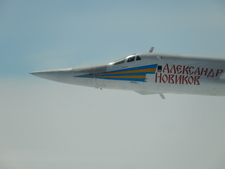2016-09-30 In 2015, France joined the NATO Integrated Air and Missile Defence System or NATINAMDS. This meant that NATO had enhanced potential for seamless coverage from Southern to Northern NATO and to the East.
According to a NATO press release on 6/19/15:
After thorough preparation and planning, jointly and effectively coordinated between the French and NATO Headquarters, France agreed to declare its assets eligible for NATO Air Policing duties over the French airspace and neighboring countries as of 01 June 2015.
After a short period of time, necessary to update and implement the required operational and tactical baseline documentation, French airspace has been included in the NATO Integrated Air and Missile Defence System (NATINAMDS) as of 10 June, essential to NATO’s air and missile defence policy and the cornerstone to the Alliance’s collective defence.
NATO assumes responsibility for monitoring airspace over the SACEUR’s area of responsibility. For the airspace over France, this responsibility is shared between Allied Air Command’s two Combined Air Operations Centres (CAOCs).
The first, CAOC Uedem, located in Germany monitors all Northern NATO airspace including the north of France; and, likewise, CAOC Torrejon, located in Spain, monitors Southern NATO airspace including the south of France.
This split is unique to NATO allies and demonstrates the special relationships and interoperability shared across the Alliance. This integration across Allied Air Command and the coordination between France and the CAOCs reflects emerging air command control capabilities for the Alliance’s collective defence mission.
“France is now fully integrated into the NATINAMDS”, says Lieutenant-General Dominique de Longvilliers, Deputy Commander of Allied Air Command. “As with every other Ally, French sovereignty is maintained through air policing.
It is an important step forward for the Alliance, which now has the responsibility to monitor and perform peacetime Air Policing mission over a seamless airspace from Spain to Norway and from Western Atlantic coast to Eastern border of Turkey.
We will continue to fine-tune our command and control procedures during the upcoming months to ensure NATO’s high standard of interoperability as well as the Alliance’s security. However, we already know we are on the right track. Indeed, this morning at 11h09 a French Mirage 2000 was requested by CAOC Uedem to takeoff against a military target for exercise. At 11h19, the M 2000 was airborne and at 11h35 the target was successfully intercepted.”
http://www.rpfrance-otan.org/France-becomes-part-of-NATINAMDS
A recent article on the French Air Force website published on September 28, 2016 provided an update.
http://www.defense.gouv.fr/air/actus-air/la-posture-permanente-de-surete-aerienne-en-action
“On September 22, 2016, the Norwegian, UK, French and Spanish Air Forces put their air policing capabilities together to protect their airspace and to intercept and escort two Russian Blackjack bombers” away from areas bordering NATO airspace.
This started with Norway intercepting with their F-16s and then handing over to the UK with its Typhoons and then to French Rafales and then by Spanish F-18s.

The article does not say but that is a route which the Russian bombers take to the Middle East.
The French article highlights the importance of the mission and of shaping capabilities for integrated air defense.
“The French Air Force is at the disposition of the State with its means to oppose those intruding in national airspace, and notably by a possible aggressor.”
The article states that the French Air Force has 414 personnel dedicated specifically to the air policing mission with 211 of those at the air command post at CNOA. This facility operates 7/7 24/24 to “guarantee the sovereignty of the national airspace.
Every day there are 11,000 aircraft of which 1400 are operating simultaneously in our dense air traffic, and transiting French Air Space. Each of these aircraft needs to identified and characterized. Due to 90 civil and military radars, the three ceters of air traffic control, can detect and analyze the aircraft in their zones of responsibility,”

